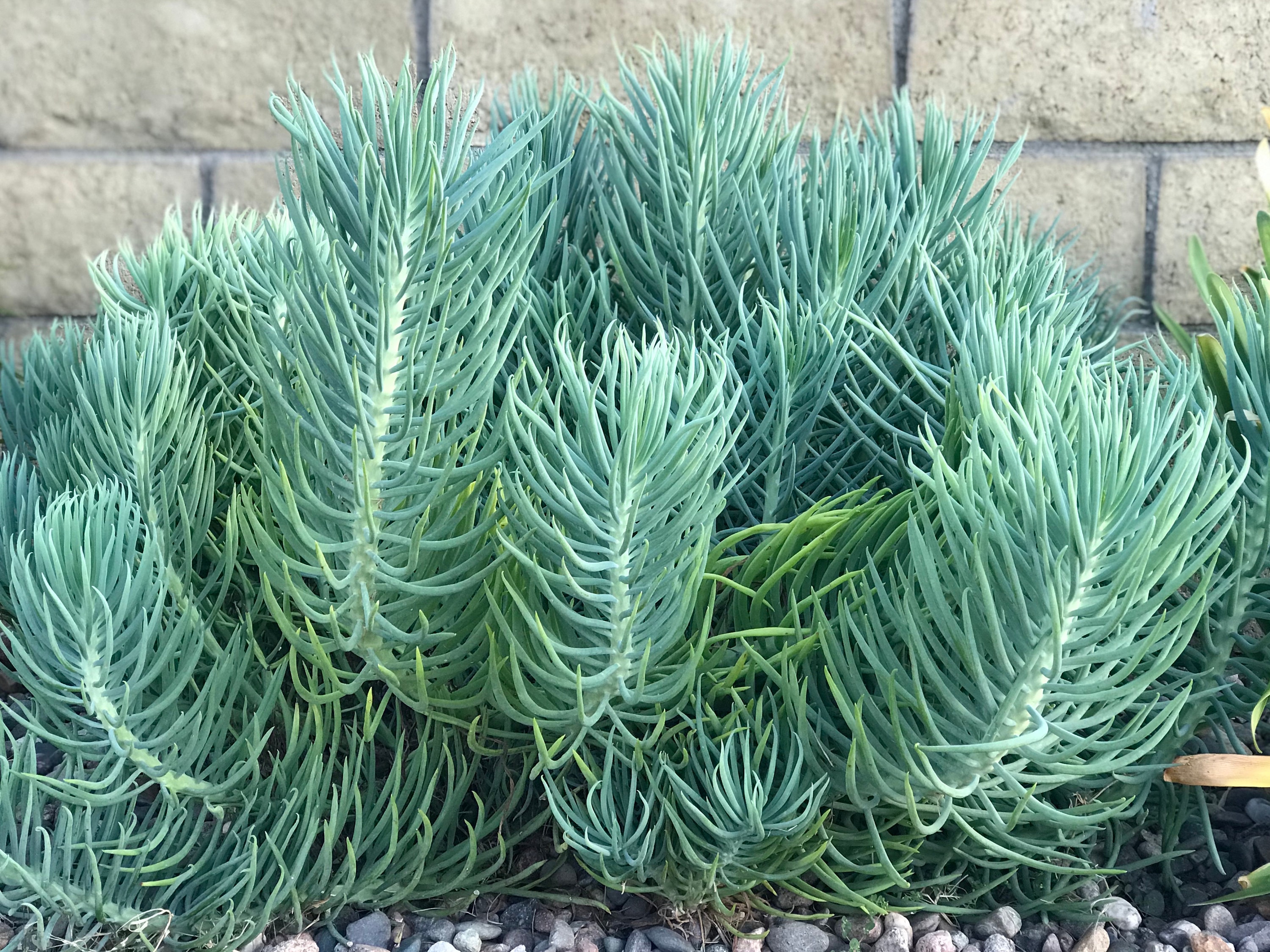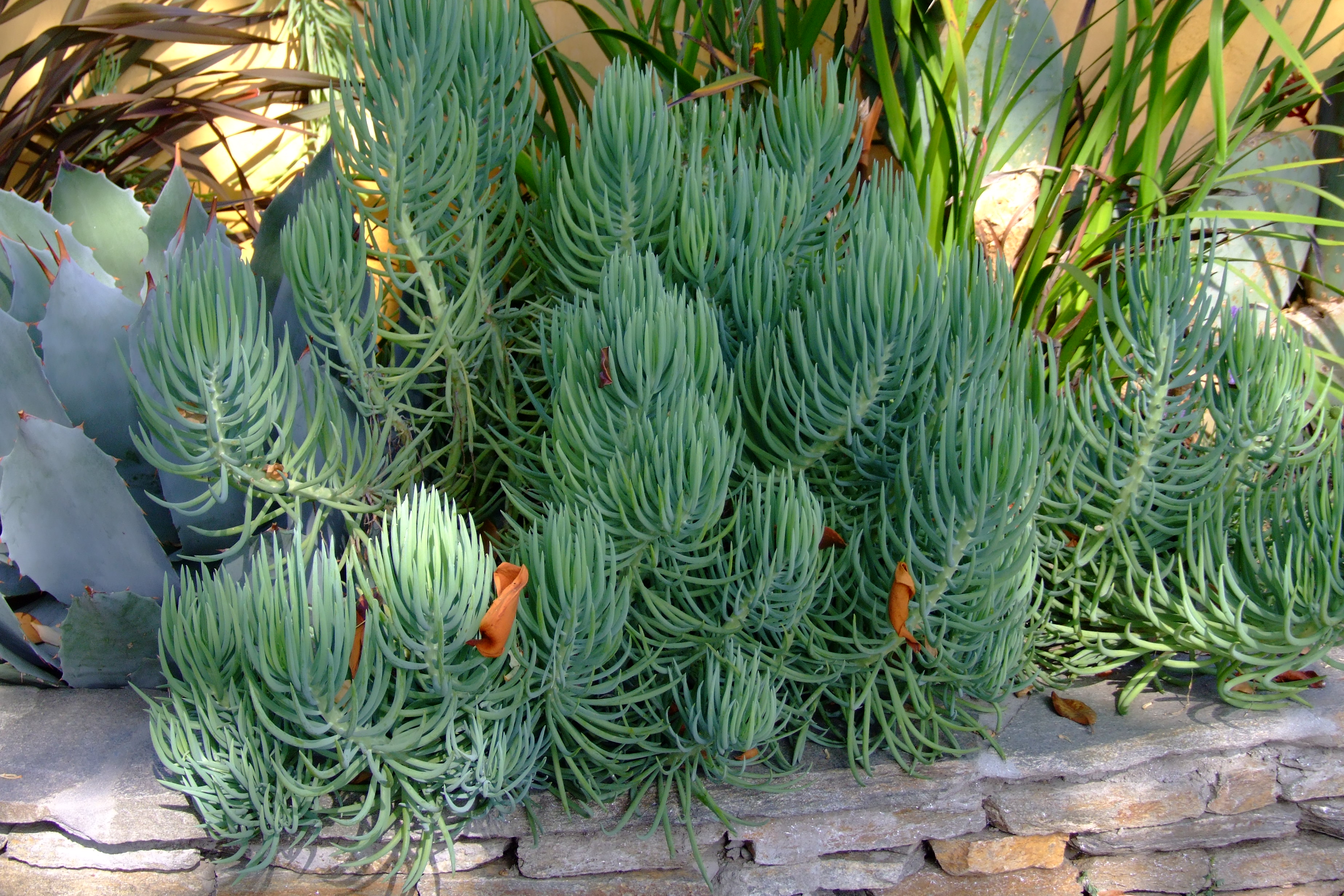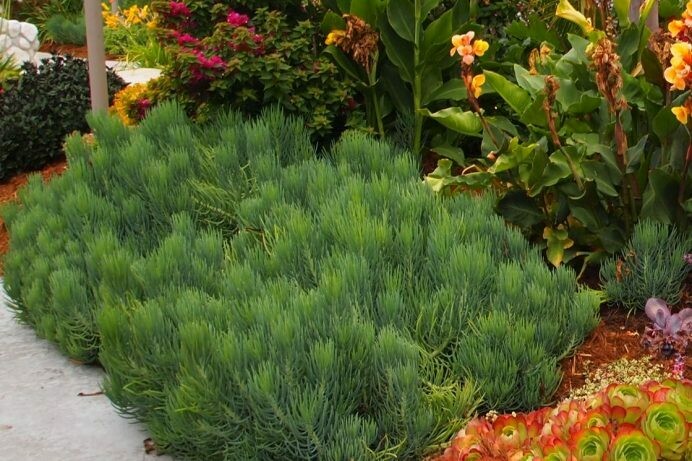This “filler” succulent with a blue-green hue is ideal for potted gardens. It grows high, which contributes to the overall texture of the scenery. It can be propagated simply, so be aware of its placement if you plan to grow it outdoors. You may also see white flowers blooming in the early months of the year.
Table of Contents
Care and Propagation Information
Senecio vitalis “Narrow-Leaf Chalksticks” makes a wonderful addition to a container garden and is resistant to deer. However, if you are planting it outside, be aware that it can quickly spread, which some people may consider to be a nuisance.
Watering
Senecio vitalis “Narrow-Leaf Chalksticks” should be watered using the “soak and dry” method, with the soil being allowed to become completely dry between waterings, as is typical for succulents.
Be sure to download our complimentary watering cheat sheet to learn how to recognize when your succulents have been over-watered and how to rescue them.
Where to Plant
If you live in an area with winters that dip below 30°F (-1.1°C), it is recommended that you plant “Narrow-Leaf Chalksticks” in a pot that can be brought inside. This succulent thrives in direct sunlight, so make sure to choose a spot in your garden that gets at least 6 hours of sun each day.
How to Propagate Senecio vitalis “Narrow-Leaf Chalksticks”
Senecio vitalis “Narrow-Leaf Chalksticks” can reproduce abundantly, and can be propagated from stem cuttings with ease.
Remember that Senecio vitalis is poisonous and be careful when handling this succulent.
Put on a pair of nitrile-dipped gloves and use a sharp knife to cut a stem of the plant close to its base to propagate it.
Wait a few days for the end of the stem to dry out and form a protective layer before planting it in a soil with good drainage.
Commonly Mistaken For
Care and Propagation Information
General Care for Senecio vitalis “Narrow-Leaf Chalksticks”
Senecio vitalis “Narrow-Leaf Chalksticks” makes a wonderful addition to a container garden and is resistant to deer. However, if you are planting it outside, be aware that it can quickly spread, which some people may consider to be a nuisance.
Watering
Senecio vitalis “Narrow-Leaf Chalksticks” should be watered using the “soak and dry” method, with the soil being allowed to become completely dry between waterings, as is typical for succulents.
Be sure to download our complimentary watering cheat sheet to learn how to recognize when your succulents have been over-watered and how to rescue them.
Where to Plant
If you live in an area with winters that dip below 30°F (-1.1°C), it is recommended that you plant “Narrow-Leaf Chalksticks” in a pot that can be brought inside. This succulent thrives in direct sunlight, so make sure to choose a spot in your garden that gets at least 6 hours of sun each day.
How to Propagate Senecio vitalis “Narrow-Leaf Chalksticks”
Senecio vitalis “Narrow-Leaf Chalksticks” can reproduce abundantly, and can be propagated from stem cuttings with ease.
Remember that Senecio vitalis is poisonous and be careful when handling this succulent.
Put on a pair of nitrile-dipped gloves and use a sharp knife to cut a stem of the plant close to its base to propagate it.
Wait a few days for the end of the stem to dry out and form a protective layer before planting it in a soil with good drainage.
Commonly Mistaken For
Senecio serpens “Blue Chalksticks” is a succulent plant with a unique, spiky blue-green foliage.
FAQ
How much sun does Senecio vitalis need?
What temperature can Senecio vitalis tolerate?
Narrow-leaf Chalksticks is capable of surviving in USDA hardiness zones 10 and 11, and can withstand temperatures as low as 30° Fahrenheit (-1° C).
Is Senecio vitalis sun or shade?
How do you take care of Senecio vitalis?
Senecio vitalis “Narrow-Leaf Chalk Sticks” is a succulent with typical watering requirements. It’s advisable to employ the “soak and dry” method, allowing the soil to become fully dry before you water it again.
Is Senecio vitalis indoor or outdoor?
Senecio vitalis “Narrow-Leaf Chalk Sticks” is an ideal succulent for any container garden due to its deer-resistant properties and usefulness as ground cover. However, if planted outdoors, its growth can be quite expansive, potentially becoming a nuisance to some.



